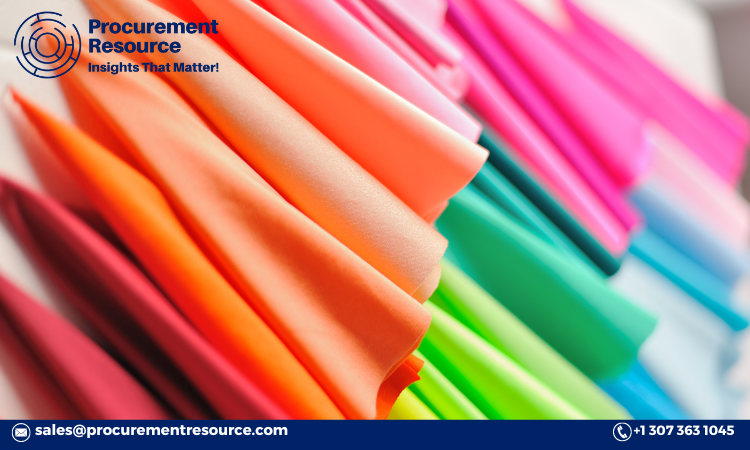Spandex, also known as elastane, is a synthetic fiber renowned for its exceptional elasticity. Originating in the 1950s, spandex has revolutionized the textile industry with its ability to stretch up to five times its original length and then return to its original shape. This remarkable property has made spandex a staple in the production of sportswear, swimwear, lingerie, and other apparel that requires comfort and flexibility. In this blog, we will delve into the spandex production process, associated costs, and the latest developments in the industry.
Spandex Production Cost
The production cost of spandex involves several factors, including raw materials, labor, energy consumption, and equipment. Raw materials, primarily diisocyanates and polyols, account for a significant portion of the production cost. Additionally, the manufacturing process is energy-intensive, requiring substantial electricity and heat. Labor costs, though variable depending on the region, also contribute to the overall expense. Furthermore, the depreciation of machinery and equipment, maintenance, and overhead costs are factored into the production cost. On average, the cost of producing one kilogram of spandex can range from $5 to $10, depending on these variables.
Request For Sample: https://www.procurementresource.com/production-cost-report-store/spandex/request-sample
Manufacturing Report and Process
The spandex manufacturing process is a complex and multi-step procedure that involves polymerization, spinning, and finishing. Here is an in-depth look at each stage:
1. Polymerization
The production of spandex begins with the polymerization of diisocyanates and polyols. These chemicals react to form a prepolymer, which is further processed to create the spandex fiber. The polymerization process involves mixing the diisocyanate and polyol in a specific ratio, followed by heating and curing. The resulting prepolymer is then dissolved in a solvent to create a viscous solution suitable for spinning.
2. Spinning
There are two primary spinning methods for producing spandex fibers: dry spinning and wet spinning.
- Dry Spinning: In dry spinning, the polymer solution is extruded through a spinneret into a heated chamber. The solvent evaporates, leaving behind solid spandex filaments. This method is preferred for its efficiency and the high quality of the fibers produced.
- Wet Spinning: In wet spinning, the polymer solution is extruded into a coagulation bath, where it solidifies into fibers. The fibers are then washed to remove any residual solvent and stretched to enhance their elasticity. Wet spinning is used when specific fiber characteristics are desired.
3. Finishing
Once the fibers are formed, they undergo a series of finishing processes to improve their properties. These processes include washing, drying, and heat-setting. Washing removes any remaining solvents or impurities, while drying ensures the fibers are moisture-free. Heat-setting involves passing the fibers through heated rollers to enhance their elasticity and strength. The finished spandex fibers are then wound onto spools and are ready for use in textile manufacturing.
Raw Material Costs
The raw materials used in spandex production significantly impact the overall cost. The primary raw materials are diisocyanates and polyols, both of which are derived from petrochemicals. The cost of these materials is influenced by several factors, including crude oil prices, supply chain dynamics, and global demand.
Diisocyanates
Diisocyanates, such as toluene diisocyanate (TDI) and methylene diphenyl diisocyanate (MDI), are crucial for spandex production. These chemicals are typically produced from crude oil, making their prices susceptible to fluctuations in the oil market. Additionally, the supply of diisocyanates can be affected by production capacity, geopolitical events, and environmental regulations.
Polyols
Polyols are another essential component in spandex production. These compounds are also derived from petrochemicals and are available in various forms, such as polyester and polyether polyols. The choice of polyol affects the properties of the final spandex fiber. Similar to diisocyanates, the cost of polyols is influenced by crude oil prices, production capacity, and market demand.
Solvents and Additives
In addition to diisocyanates and polyols, solvents and additives are used in the spandex manufacturing process. Solvents, such as dimethylformamide (DMF), are used to dissolve the prepolymer and facilitate spinning. Additives, including stabilizers and lubricants, enhance the performance and durability of the spandex fibers. The cost of these materials is relatively stable but can vary based on supplier and quality.
Latest News
The spandex industry is continually evolving, driven by technological advancements, market trends, and environmental considerations. Here are some of the latest developments in the spandex production landscape:
1. Sustainability Initiatives
With growing environmental awareness, spandex manufacturers are exploring sustainable production methods. This includes developing bio-based polyols from renewable sources, reducing energy consumption during production, and implementing recycling programs for spandex waste. Companies are also focusing on creating spandex fibers with reduced environmental impact without compromising performance.
2. Technological Advancements
Advancements in polymer science and spinning technology are enhancing the quality and versatility of spandex fibers. Innovations such as nanotechnology and smart textiles are being integrated into spandex production, resulting in fibers with improved properties like moisture-wicking, antimicrobial resistance, and enhanced durability. These advancements are expanding the applications of spandex in various industries, including medical textiles and high-performance sportswear.
3. Market Trends
The demand for spandex continues to rise, driven by the growing popularity of athleisure wear, activewear, and comfortable apparel. The COVID-19 pandemic has further accelerated this trend, with consumers prioritizing comfort and flexibility in their clothing choices. Additionally, the increasing adoption of e-commerce has made spandex-based garments more accessible to a global audience, boosting market growth.
4. Regional Developments
The spandex production industry is witnessing significant developments across various regions. In Asia, countries like China and India are leading in spandex production, driven by abundant raw material availability and cost-effective manufacturing. North America and Europe are also experiencing growth, with a focus on high-quality and sustainable spandex production. Regional developments in trade policies, environmental regulations, and technological adoption are shaping the global spandex market.
5. Industry Collaborations
Collaborations between spandex manufacturers, textile companies, and research institutions are fostering innovation and improving production processes. These partnerships aim to develop new spandex formulations, enhance production efficiency, and create sustainable alternatives. Collaborative efforts are also focusing on improving the recyclability of spandex garments and reducing the environmental footprint of spandex production.
Conclusion
The spandex production process is a complex and dynamic field that combines chemistry, technology, and innovation. Understanding the various stages of production, the associated costs, and the latest industry developments provides valuable insights into the world of spandex. As the demand for versatile and comfortable apparel continues to grow, the spandex industry is poised for further advancements and sustainable growth.








